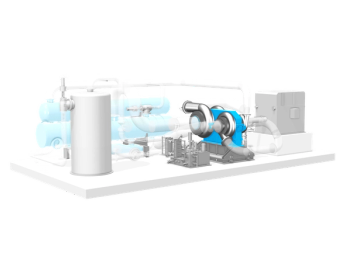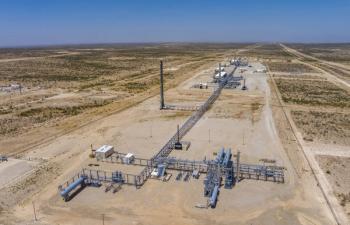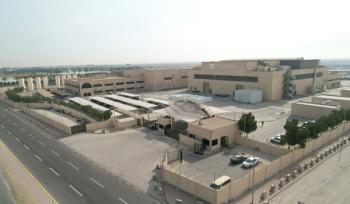
Conference for whom? Technology developers or users?
The ASME Power & Energy Conference – 2016 featured five co-located events, plus the International Conference on Nuclear Engineering.
- Power Conference
- Energy Sustainability
- Fuel Cell
- Gas Turbine (Forum)
- Energy Storage
- International Conference on Nuclear Engineering – ICONE24
I attended the ASME Power & Energy Conference in Charlotte because, like so many others, I could not see going all the way to Seoul to participate in the regular June ASME International Gas Turbine Institute (IGTI) event.
At the same time and at the behest of ASME headquarters, IGTI is planning to co-locate with the ASME Power & Energy in 2017, in lieu of conducting its own standalone event next June. I was curious about the Power & Energy Conference and its reach.
The Electric Power Committee did conduct one plenary and six breakout sessions on gas turbines as part of its commitment to support ASME headquarters’ interests in 2016. The major suppliers presented informative and relevant insights on the direction of the gas turbine development, given the structural changes occurring in the industry. The sessions were informal enough that there were interesting and valuable follow-on conversations.
Key areas included forecasts for growth in power generation of three million MW hours in the next 10 years, 30% of which is likely to be gas turbine. Fifty percent of the installed fleet is forecast to be HA units, and HA efficiencies are expected to increase from 62% to 65+% LHV. There was some humor among suppliers on the interpretation of the “+”.
Advanced CMC materials, advance simulation and rapid prototyping continue to be critical enabling technologies, with fast start and fast ramps essential to support renewables integration. CMC were said to offer a +400°F capability with 2x the strength at temperature and 1/3 the weight.
I did attend several of the CO2 and Climate Change related sessions. RTI presented an overview of capture technologies and representatives from the Department of Energy presented an overview on the status of their capture and the utilization efforts.
I have several observations on the conference:
- The keynote event was uninspiring.
- The inclusion of “Gas Turbine” into the 2016 conference felt like IGTI was simply providing filler into a Power & Energy content void. The Gas Turbine (Forum) was included as a way to round out the coverage on Power & Energy spectrum
- The conference delivered at a “user level” of information, not a “practitioner” or “technology development” level. In IGTI parlance, the conference delivered at a “tutorial” or “panel session” level.
- The information provided to navigate the six combined conferences was confusing for me, with either conflicting tracks or nothing of interest. There appeared to be too many people sitting around during active sessions.
- The overlapping array of the topics necessitated forced choices and limiting the ability to navigate tracks effectively. Some inexperience moderators did not respect the rigid time slots essential to “track hopping”. The nature of panel sessions created similar “track hopping” limitations.
- Although I was unable to sit in on these, the ICONE Nuclear topics seem to be on a technical par with the typical IGTI Gas Turbine content. I am unclear on the ICONE protocols, but IGTI papers are always peer reviewed. IGTI covers these topics at a very high technical level.
- IGTI Steam and Wind Turbine coverage is also at a more technical level within existing IGTI framework.
- I did not see many familiar faces, which leads me to believe that the conference drew limited attendance from either the IGTI, or the Texas A&M Turbo Symposium communities.
- The key academic contributors were not present.
- It feels like Siemens, the City of Charlotte and its influential constituents are trying to sell the area as an Energy Hub, in an effort to turn this conference into an annual event.
The Power & Energy and IGTI Conferences are to be fully co-located in June 2017. Sources suggest that this is a cost reduction effort in the face of ASME’s declining traditional paper, publication and standards revenue streams. Some of these individual conferences may also be experiencing marginal returns based on the advertised subject matter and shifting economics within the power generation market.
In addition, the consolidation of key OEMs, the serious reduction in Oil & Gas related business, and the resulting downturn in EPC business must surely have reduced conference attendance and exhibitor revenue streams. In the face of declining revenue and overlapping intent, some rationalization of these efforts would seem to make sense. The question is, “What’s the best way to do this?’
There are overlaps, redundancies and gaps between the ASME Power & Energy coverage and the ASME IGTI. The significant growth of wind generation, coupled with the almost complete shift of fossil generation to natural gas fired gas turbines, highlights Power & Energy coverage voids on these topics.
At the same time, the IGTI has grown well beyond its original gas turbine “field of interest” indicated by its “Gas Turbine” name. The IGTI conference tracks certainly include a high level of concentration on compressor, combustion and turbine component design, but a substantial portion of the current IGTI conference tracks have evolved to include the same power applications and system integration topics defined under the Power & Energy Conference descriptions.
These include Natural Gas Combined Cycle and the many other variants covered under the Advanced Cycles theme; GT/Fuel Cell Hybrids, Microturbines, Organic Rankine Cycles (ORC), Supercritical CO2 (SCO2), Pumped Hydro and Compressed Air Energy Storage (CAES) just to name a few.
IGTI also covers many of the nuclear applications as it relates to rotating equipment, balance of plant and system integration such as Pebble Bed Modular Reactors (PBMR) and Molten Salt Reactors (MSR),
IGTI also covers all forms of land, sea and air propulsion applications.
The current ASME HQ direction seems to be to integrate IGTI activities into Power & Energy conference structure and management.
For many in IGTI, this approach feels very much like a “hostile takeover” or an “Identity Theft”. The organization feels marginalized, with its long and storied history of success discounted.
My sense is that there is a mismatch of interests in Power & Energy’s current end user orientation and the IGTI technical/peer reviewed practitioner legacy.
The conference organization around technologies seems overly simplistic and does not differentiate the levels of expertise among potential attendees. There is a big difference between the interests of end users and those of technology practitioners/developers.
It might be better to combine ICONE and IGTI focused at the highest technology/development levels and draw on existing interests and support of OEMs, major users, EPCs, universities, developers and government entities, as well as sophisticated utility and oil & gas rotating equipment specialists. The conference would include the peer review process.
The balance of the topics could be consolidated into a conference focused on end user application. Many of these end use topics/technologies are used in combination with one another and such a consolidation would be welcomed and useful. System integration could become one of the unifying or bridge themes.
These two levels can and do co-exist, as is the case within IGTI. These components evolved from the need to understand and develop products and services with a full understanding of the application.
It is unclear on how a consolidated/co-located conference will manage this important interface.
Newsletter
Power your knowledge with the latest in turbine technology, engineering advances, and energy solutions—subscribe to Turbomachinery International today.




